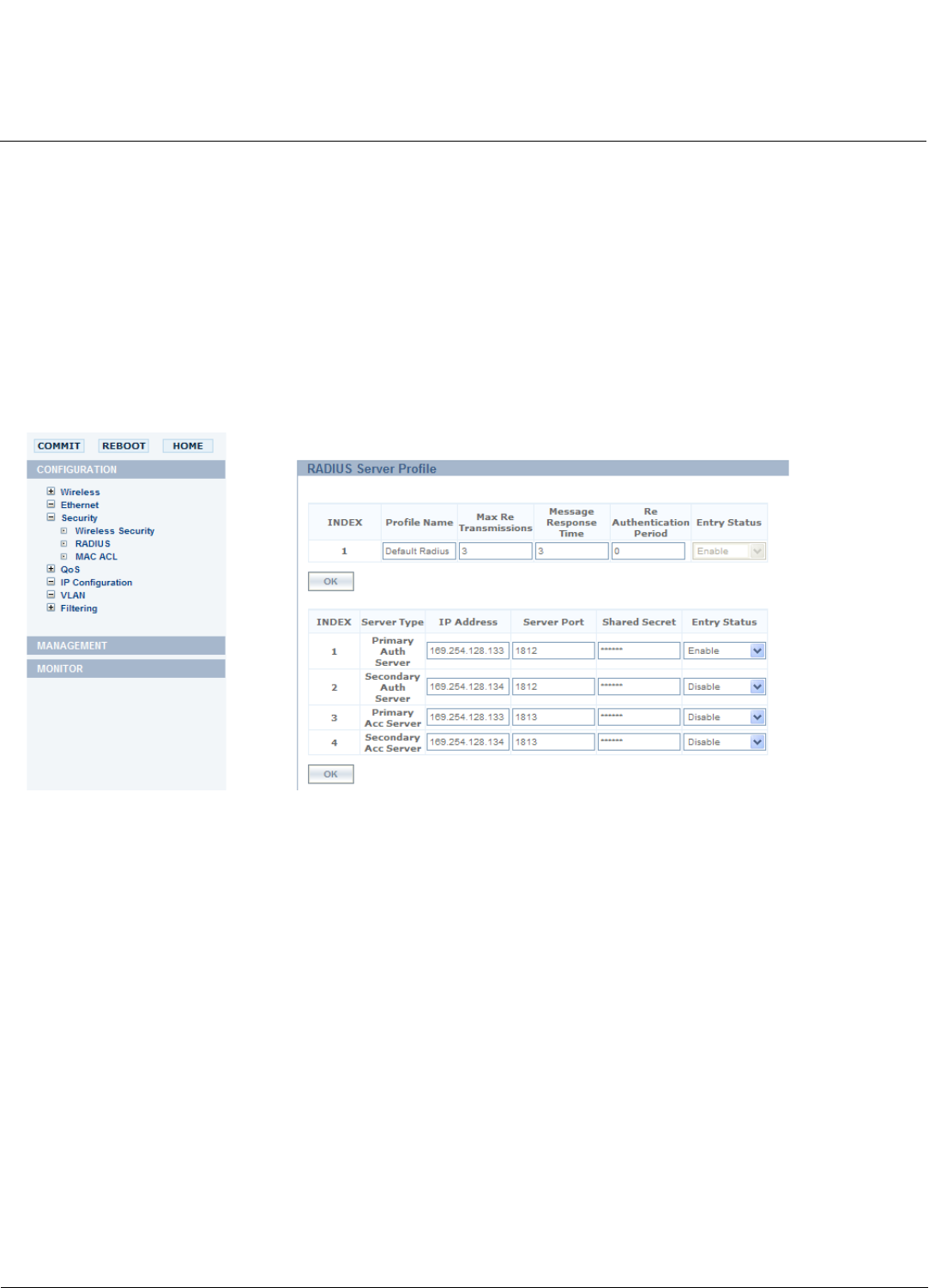User guide
Table Of Contents
- Introduction
- Installation and Initialization
- Managing the Access Point
- Basic Configuration for an Enterprise
- Access Point Features
- Using Web Interface to Manage the Access Point
- Using SNMP Interface to Manage the Access Point
- Using CLI to Manage the Access Point
- Global Configuration Mode
- General Notes
- Configuring the AP using CLI Commands
- Command Line Interface Mode Overview
- User Exec Mode
- Privileged Exec Mode
- Show Command Tree Structure Command
- Show VLAN Command
- Show MAC ACL Command
- Show RADIUS Server Table Command
- Show RADIUS Supported Profile Table Command
- Show Security Wireless Config Table Command
- Show QoS Profile and Policy Command
- Show QoS EDCA Command
- Show Wireless Properties Command
- Show 11n Wireless Properties Command
- Wireless VAP Command
- Ethernet Interface Command
- Network Configuration Command
- Advaned Filter and Global Filter Command
- TCP-UDP and Static MAC Address Table Commands
- Protocl Filter, Filter Type and Filter Control Table Command
- Access Control and HTTP, Telnet and TFTP Commands
- SNMP Read, Read-Write Password and Trap Host Table Command
- Country Code and Management Commands
- System Information Command
- System Inventory Management Command
- Event Logand ICMP Commands
- IP ARP Statistics and SNTP Command
- Syslog configuration and RADIUS Client Authentication Table Commands
- RADIUS Client Access Command
- Interface Statistics Command
- Wireless Station Statistics Command
- IP Address, Subnet Mask and Gateway Command
- Scalar Objects Commands
- Table Entries Commands
- Table Entry Deletion Command
- Table Entry Edition Command
- VAP Table Commands
- Troubleshooting
- ASCII Character Chart
- Bootloader CLI
- Specifications
- Technical Services and Support
- Statement of Warranty

Using Web Interface to Manage the Access Point AP-800 User Guide
Configuring the Device
65
RADIUS
A RADIUS server profile consists of a Primary and a Secondary RADIUS server that get assigned to act either as MAC
Authentication servers, 802.1x/EAP Authentication servers, or Accounting Servers in the VLAN configuration.
NOTE: You can configure only single RADIUS profile containing four server profiles viz. primary authentication server,
secondary authentication server, accounting server and secondary accounting server. The profile name is
common for all the four entries.
This page configures only the Primary RADIUS server associated with the profile.
1. Navigate to Configuration > Security > RADIUS.
2. Configure the folllowing parameters for the RADIUS Server profile:
Figure 6-15
• Profile Name: Enter the profile name. This profile name is mapped to a VAP.
• Max ReTransmissions: Enter the Retransmission value.
• Message Response Time: Enter the Message Response time.
• ReAuthentication Period: Enter the ReAuthentication Period.
• Entry Status: Select the entry status for the profile.
Configure the following parameters for the radius servers:
• Server Type: This is read only parameter and it displays the server type.
• IP Address: Enter the server’s IP address.
• Server Port: Enter the port number which the AP and the server will use to communicate. By default, RADIUS
Authentication/Accounting servers communicate on ports 1812/1813.
• Shared Secret: Enter the password shared by the RADIUS server and the AP. The default password is “public.”
• Status: Select Enable from the drop-down box to enable RADIUS server, if required.
3. Click OK.










